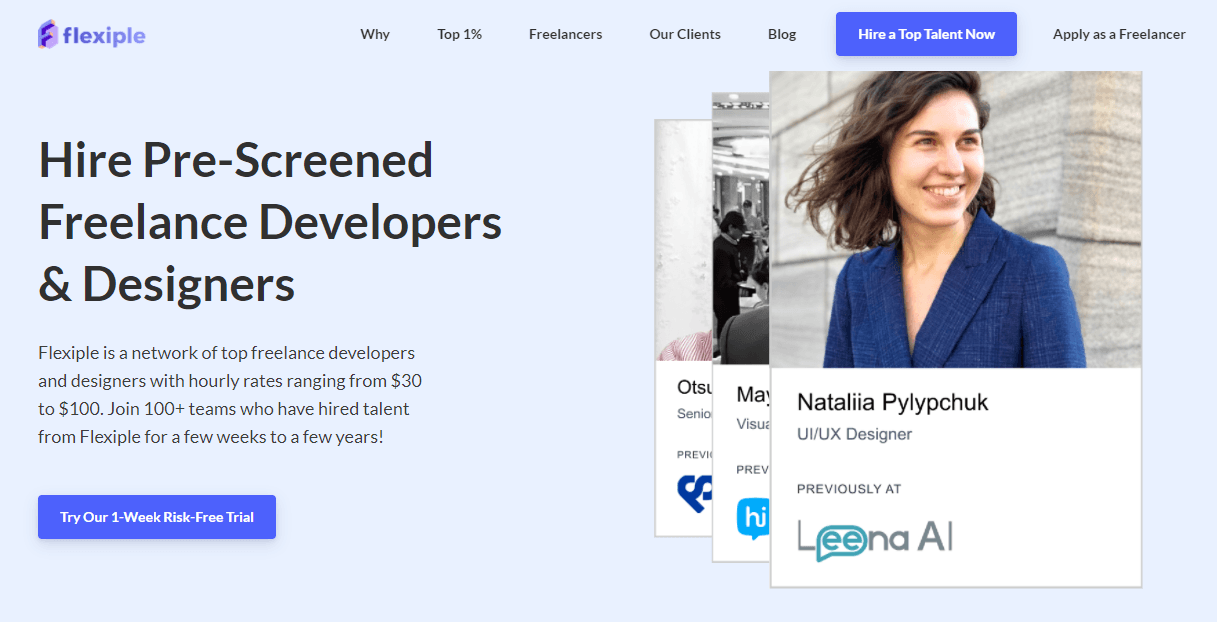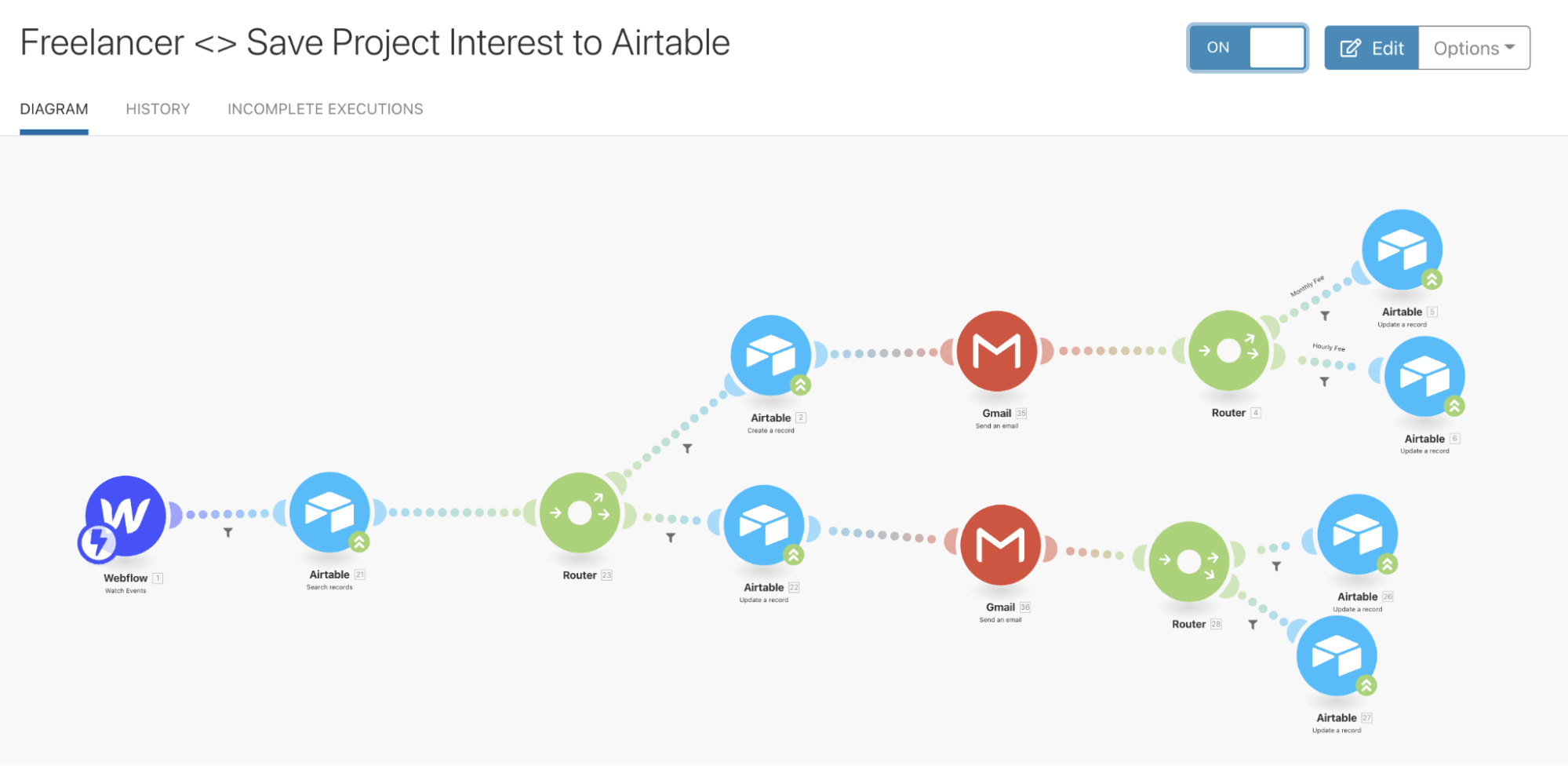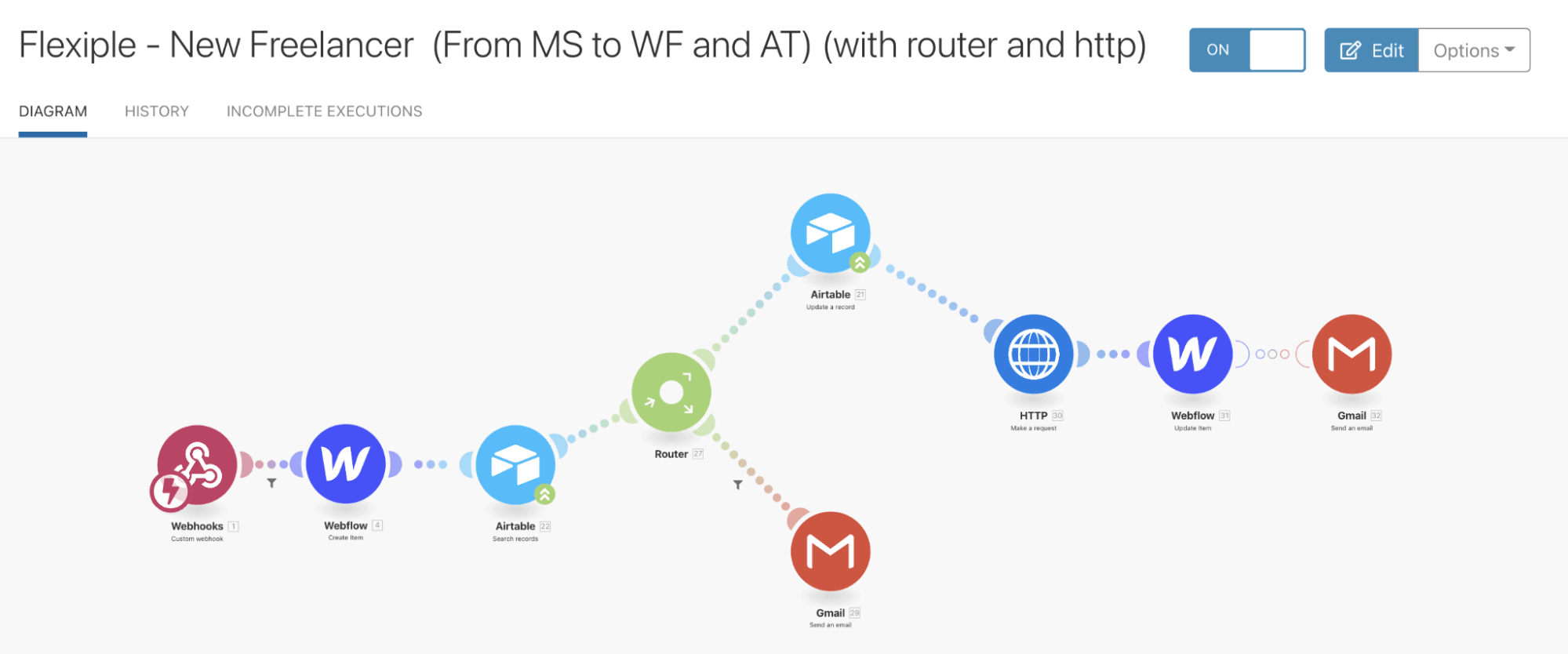Recruitment Automation: How Flexiple Helps Startups Find Great Talent

It is a well-known fact that finding tech talent is one of the biggest and most expensive challenges a company can undertake these days.
Years of talent scarcity and rising demand resulted in a scenario where stratosferic salaries, rampant poaching practices, and high turnover rates have become the norm rather than the exception.
On the other hand, the same factors created opportunities for those who excel at recruiting, leading to the rise of recruitment-as-a-service (RaaS) companies like Flexiple.
Finding top tech talent for other companies is a lucrative business, but also a highly competitive one. And more often than not, success is measured by the ability to match able professionals with interesting companies in as little time as possible.
This can be done in a number of ways.
Some RaaS companies, for example, deploy global ad campaigns to lure engineers and developers from every corner of the globe. Others hire small armies of recruiters that roam around LinkedIn and Twitter to hunt anything that moves.
Flexiple, on the other hand, decided to take the less beaten path by adding automation into the mix.
So far, the results have been nothing short of amazing - and there’s more to it.
In this article, we will show you some of the processes that Flexiple automated, as well as the apps that allowed them to do so.
But first, let’s take a brief look at this up-and-coming company.
Looking for talent in all the right places
Flexiple defines itself as a network of freelance developers and designers that partners up with top startups to help them find quality tech talent.
They provide customers with easy access to professionals, who in turn need to undergo a 6-step screening process to make the cut into Flexiple’s talent pool.
By doing this, they guarantee that customers get the “cream of the crop”, while saving them valuable time and money as well.
Most importantly, they understand the tech sector. This allows them to match companies with talented engineers and designers without having to beat around the bush.
As you can imagine, companies looking for tech talent grew interested in Flexiple’s services, and soon enough they found themselves overwhelmed by demand.
This led them to explore automation. Like other companies at this stage, Flexiple began by identifying the different processes that could be standardized and automated.
It’s always darkest before automation
One of the first issues Flexiple solved with automation was related to their talent network, and how the applicants viewed and applied to the available positions within various companies.
Before automation, the process was outbound.
The Flexiple team would manually shortlist candidates for a position, engage over email with each of the candidates, and eventually come up with a recommendation for the client.
Naturally, this process demanded a lot of time, and involved too many team members as well (3-4 individuals on average).
To make things worse, the constant back-and-forth communications over email translated into poor turnaround time to clients. On more than one occasion, the client already filled the position by the time Flexiple came back with a viable match.
In addition, outdated data regarding the freelancers’ availability added an inconsistency factor to the process.
So, to solve these problems, Flexiple decided to change the process, and automate it with Make.
After automation: Improvements and results
In order to improve the process, Flexiple first addressed the very nature of it.
Instead of reaching out to freelancers when a position was available, they switched to a “self-serve” web dashboard containing all the available positions for the freelancers to see and apply.
All the key information related to a position was also made available on the dashboard, so as to avoid redundant questions and answers.
To conclude, Flexiple started to capture the key details regarding availability and interest through the dashboard as well.
Make funnels the data automatically and activates a series of actions depending on the inputs received, greatly reducing the need for extra hands.
The changes resulted in a much leaner process where:
Freelancers login to the Webflow dashboard to check new opportunities
Login details are automatically synced by Make
When a freelancer applies to a project, Make saves the details from Webflow to Airtable
A “first reply” email is then sent automatically by Make
And as we mentioned earlier, the results were pretty impressive.
First of all, the email exchanges with freelancers were reduced by a large margin: From an average of eight emails with the old process to two emails as of today.
Turnaround time to clients saw radical improvements as well. Before automation, it used to take Flexiple two weeks to get back to a client with a recommendation. Now, they are able to recommend someone in just a couple of days.
Needless to say, this is not the only process Flexiple automated.
Other key business aspects, such as creating freelancer accounts and updating project details were fully automated as well.
Altogether, automation allowed Flexiple to post a 300% increase in revenue while growing their team by 50%.
In other words, they went from ≈ $700,000 in annual revenue to $2 million, while keeping the headcount in check (from 10 to 15 people over the same period).
Final thoughts
There are two key takeaways from Flexiple’s story.
The first one is rather obvious: No change can take place without the right attitude and approach.
Flexiple knew there was room for improvement, and didn’t hesitate to move pieces around in order to grow.
The second takeaway is related to the impact of automation.
Never before was it this easy to produce such massive changes in so little time, and with this level of affordability.
Just a little over a decade ago, a similar development would have run into the thousands, if not hundreds of thousands of dollars. Nowadays, any company can make it happen for a mere fraction of that.
All it takes is the right attitude, and the best tools.
Happy automating!



